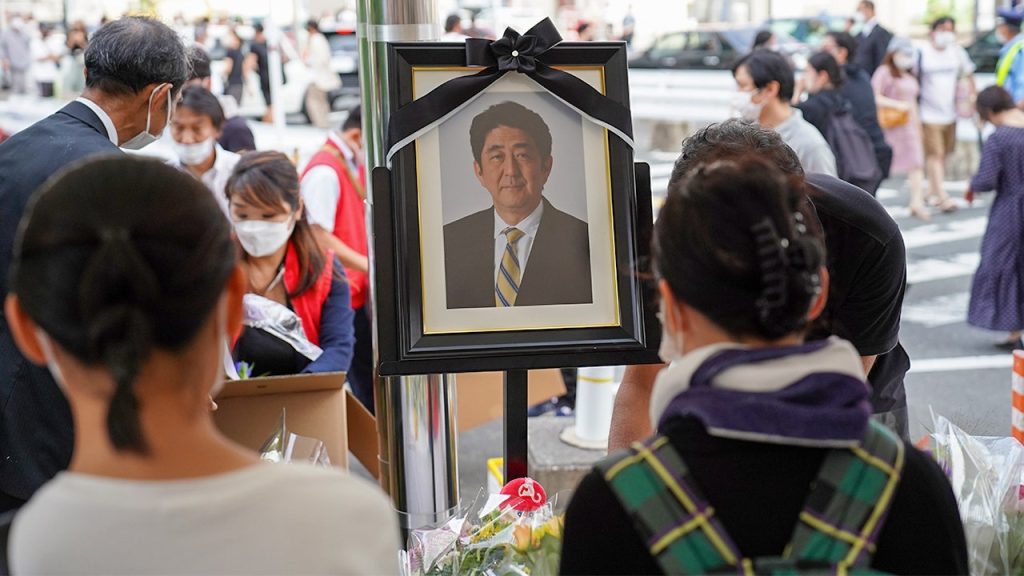A Solemn Trial Amid Diplomatic Engagements: Abe’s Assassin Faces Justice as Trump Visits Japan
In a remarkable coincidence of timing, Tetsuya Yamagami, the 45-year-old man accused of assassinating former Japanese Prime Minister Shinzo Abe, pleaded guilty in a Nara court on Tuesday just as former U.S. President Donald Trump was meeting with Japan’s new Prime Minister Sanae Takaichi. The courtroom scene in western Japan unfolded with Yamagami, dressed in a black shirt and gray pants with his hair tied back, acknowledging his actions without hesitation. “It is all true. There is no doubt that I have done all this,” he stated when asked to enter his plea by the judge at the Nara District Court. While accepting culpability for the shooting that shocked Japan and the world in July 2022, Yamagami’s legal team raised technical objections to specific details of the charges, particularly arguing that his homemade weapon should not be classified as a “firearm” under Japanese law as it existed at the time of the assassination—a law that was subsequently amended following Abe’s death.
The assassination of Japan’s longest-serving post-war prime minister was allegedly motivated by Yamagami’s grudge against the Unification Church, a controversial religious organization founded in South Korea in 1954. According to investigators, Yamagami believed Abe maintained connections to the church, which he blamed for his family’s financial ruin after his mother reportedly made substantial donations to the organization. The trial, which commenced in Nara where the shooting occurred during a campaign speech, is scheduled to conclude in mid-December. The proceedings represent a somber chapter in Japan’s modern history, addressing the first assassination of a sitting or former Japanese leader since the 1930s, and marking a rare act of gun violence in a country with some of the strictest firearm regulations in the developed world.
Meanwhile, across the country, diplomatic engagement was in full swing as Trump met with Prime Minister Takaichi, who has only been in office since early October. Takaichi, 64, Japan’s first female prime minister, is widely described as an ideological successor to Abe, sharing his vision for constitutional revision to strengthen Japan’s defense capabilities beyond the constraints of its post-war pacifist constitution. Trump, who frequently praised Abe during and after his presidency, noted upon arrival in Japan that he had heard Takaichi was “a great ally and friend of Shinzo Abe, who was my friend.” When Abe was assassinated in 2022, Trump had issued a heartfelt statement, calling it “really bad news for the world” and describing Abe as “a unifier like no other” who “loved and cherished his magnificent country.” The connection between Trump and Abe’s political legacy, now embodied by Takaichi, added a poignant dimension to the visit occurring simultaneously with the trial of Abe’s confessed killer.
The diplomatic engagement between Trump and Takaichi proved productive, yielding signed trade agreements and cooperative ventures in rare earth minerals—critical components for advanced technologies. During their meetings, both leaders spoke optimistically about what they characterized as the dawn of a “golden age” in U.S.-Japan relations. Trump’s approach was markedly personal and open-ended, telling Takaichi that the United States would be available for “anything you want, any favors you need, anything… to help Japan.” Such statements reflect the continuing importance of the U.S.-Japan security alliance, which has been a cornerstone of America’s Indo-Pacific strategy for decades. The former president’s visit included addressing U.S. military personnel stationed at Yokosuka Naval Base aboard the USS George Washington, where he announced that the first batch of missiles for Japan’s F-35 fighter jets would arrive within the week—a tangible demonstration of ongoing defense cooperation.
Prime Minister Takaichi, who came to power following the Liberal Democratic Party’s loss of its upper house majority and the subsequent resignation of Prime Minister Shigeru Ishiba, used the opportunity of Trump’s visit to reinforce her commitment to Abe’s security vision. Sharing the stage with Trump at the naval base, she declared that Japan is “committed to fundamentally reinforcing its defense capability” and “ready to contribute even more proactively to peace and stability in the region.” These statements align with the broader shift in Japan’s defense posture in recent years, responding to growing regional challenges from North Korea’s missile programs and China’s expanding military presence. Takaichi’s rise to power represents both a historic breakthrough as Japan’s first female prime minister and a continuation of Abe’s nationalist and security-focused policy agenda, making her a natural partner for Trump, who had cultivated a close relationship with her predecessor and mentor.
The simultaneous occurrence of Yamagami’s trial and Trump’s diplomatic visit creates a striking juxtaposition in contemporary Japanese history. On one hand, the legal proceedings represent Japan coming to terms with a shocking act of political violence that claimed the life of its most influential modern leader. On the other, the diplomatic engagements between Trump and Takaichi suggest the ongoing influence of Abe’s political legacy, particularly his vision of a more assertive Japan working in close partnership with the United States. As the trial is expected to conclude in mid-December, it will likely continue to evoke reflection on Abe’s complex political legacy and the circumstances of his untimely death. Meanwhile, the relationship between the United States and Japan continues to evolve, shaped by both historical ties and emerging challenges in an increasingly complex Indo-Pacific region. In this context, Takaichi’s leadership and her ability to navigate both domestic politics and international relationships will be crucial for Japan’s future trajectory.


